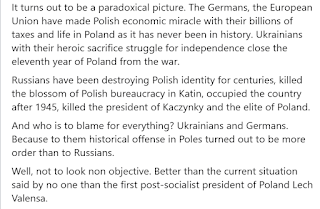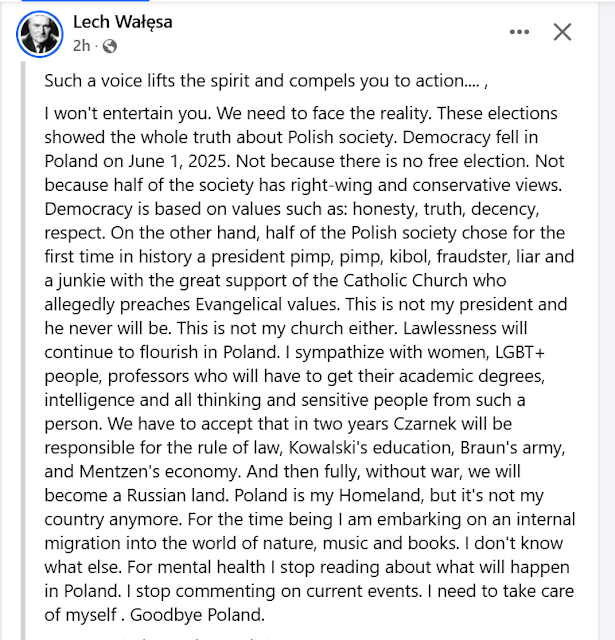Steven
Pinker and Michael Shermer, Please Tell the Truth about Friedrich
Spee
Dr.
Steven Pinker
Dr.
Michael Shermer
Penguin
Books
Henry
Holt and Company
Gentlemen:
I'm
writing to request that you retract what appears to be false material
published in both the 2011 Penguin Book Better Angels of Our Nature:
Why Violence Has Declined by Dr. Steven Pinker and the 2015 Henry
Holt and Company book The Moral Arc: How Science and Reason Lead
Humanity Toward Truth, Justice, and Freedom by Dr. Michael Shermer. I
request that you remove this material from any future editions of
both books, and that you insert accurate material.
Both
books repeat an unsourced anecdote that misrepresents Father
Friedrich Spee, one of the first and most influential opponents of
the witch craze that seized Europe during the Early Modern Period.
This misrepresentation of a long dead priest matters for several
reasons.
Friedrich
Spee was a human rights hero and pioneer. He risked his life for
others.
Spee
is a figure of historical importance. Understanding him is key to
understanding the witch craze, a significant period in Western
history.
Spee's
work is highly significant today. His biographers consider Spee to be
among the first influential authors to work out an argument against
the use of torture to obtain confessions. Spee "ranks among the
most important authors of his time." His work "was one of
the first sustained, detailed attacks…against the witch trials and
use of torture" (Modras 27).
Both
Doctors Pinker and Shermer self-identify as representational of
atheist reason and truth, as opposed to the alleged obscurantism of
persons of faith. That both gentlemen have disseminated unsourced
material from a non-scholarly book undermines their
self-identification.
Both
Doctors Pinker and Shermer self-identify as representing a new and
improved, science-and-reason-inspired path toward better lives for
all humankind. Father Friedrich Spee should be assessed as an ally,
and celebrated, by those interested in human rights. He should not be
denigrated and slandered with the use of spurious material and
unscholarly methodology.
Both
Doctors Pinker and Shermer repeat Charles Mackay's anecdote about
Friedrich Spee in their books. As Mackay would have us believe, a
humanitarian secular leader, the Duke of Brunswick, "shocked"
by the witch craze, which, presumably, is being carried out by
Catholic clerics, summons Father Friedrich Spee. The Duke
demonstrates to Spee that torture does not work in the extraction of
confessions. Brunswick does this by torturing an accused witch into
implicating Spee in witchcraft. Spee has an Aha moment and puts an
end to the witch craze. Dr. Pinker uses this anecdote to prove that
the "Age of Reason" and a "scientific spirit"
ended the witch craze. Dr. Pinker places the witch craze in the
Middle Ages, as does Dr. Shermer. Dr. Shermer uses the same anecdote
to "prove" the same point.
The
anecdote is almost certainly false.
I
wrote to Dr. Pinker and he was kind enough to reply. He acknowledged
that he found the anecdote in a book that cited Charles MacKay's 1841
book Extraordinary Popular Delusions and the Madness of Crowds.
Charles MacKay was a Scottish journalist, not a scholar. Delusions is
not a serious history of the witch craze. It was written in a popular
and sensationalistic style. I found no footnote for the anecdote in
my copy of Mackay's book. The reference librarians at the Cheng
Library found no footnote for Mackay's anecdote in their copy of
Delusions.
Dr.
Ronald Modras, author of a biographical sketch of Spee that appeared
in a scholarly journal, and author of several other works on Jesuits
and Catholic history, wrote to tell me that he has read at least
eight works on Friedrich Spee and that none of them mention Mackay's
Duke of Brunswick anecdote.
I
find no mention of Spee, witches, or torture in one online biography
of the Duke of Brunswick (here).
At
the height of the witch craze, Friedrich Spee risked his life in
writing an anti-witch craze book, Cautio Criminalis. There is no
evidence in Cautio Criminalis that it was inspired by any shallow
trick of any Duke. Rather, as Modras writes, "The Cautio is not
a calmly argued essay on jurisprudence. It is a shrill cry to stop a
travesty of justice" (Modras 29).
Cautio
Criminalis was inspired by Spee's experience. "I myself have
accompanied several women to their deaths in various places over the
preceding years whose innocence even now I am so sure of that there
could never be any effort and diligence too great that I would not
undertake it in order to reveal this truth…One can easily guess
what feelings were in my soul when I was present at such miserable
deaths."
Cautio
Criminalis' argument against the witch craze is not the argument
Doctors Pinker and Shermer want it to be. Both Doctors Pinker and
Shermer repeat what has since been proven false: that increasing
scientific thought ended the witch craze.
In
fact Spee does not use a scientific disbelief in witches to support
his case against the witch craze. Modras argues that Spee is like a
modern-day opponent of the death penalty. Realizing that banning the
death penalty outright might be unattainable, death-penalty opponents
focus on issues like the high cost of death penalty cases, and the
lower cost of life in prison.
Spee's
concession to popular belief notwithstanding, his insights about what
causes witch crazes are in alignment with contemporary scholarship.
"It
all begins with superstition, envy, and calumnies. Something goes
amiss, and people clamor for an inquisition. All the divine
punishments described in the Bible now come from witches. God and
nature are no longer responsible for any mishap; witches do it all"
(Modras 32, summarizing Cautio Criminalis).
That
a Roman Catholic priest writing in the height of the witch craze
offered insights that mirrors the most modern scholarship contradicts
the notion that people needed to evolve into, or be tutored by,
atheists, or scientists, or twenty-first century moderns.
Spee
briefly concedes what his readers probably cannot be disabused of –
that witches exist – but then Spee argues that guilt cannot be
adequately ascertained, and torture is too cruel and unjust.
Spee
uses the tools of his Catholic faith to make his point to his
audience. Spee uses traditional Jesuit argumentation style and
Biblical citations. He cites the parable of the wheat and the weeds.
Just as a farmer allows weeds to grow with wheat, and separates one
from the other at harvest, God allows sinners to live out their lives
(Matthew 13). Just so accused witches should be allowed to live, Spee
argues, in order that people might avoid the serious crime of killing
innocents. In risking his life to save others and to cleanse the soul
of his church and his wider society, Spee was following the example
of his Lord, Jesus Christ.
Spee's
traditional, Catholic, Jesuit argumentation style, his graphic
descriptions of the cruelty and irrationality of torture, and his
Biblical references worked.
Where
and when Spee's book was translated and read by leaders, the witch
craze ended.
The
pattern of Spee's impact was repeated throughout Europe. It wasn't
science that ended the witch craze.
I
asked prominent witch craze scholar Brian P. Levack, "What ended
the witch craze?"
On
February 21, 2015, Levack wrote to me, "I address this question
at length in the third edition of my book, The Witch-hunt in Early
Modern Europe, and at great length in my essay on the decline and end
of witch-hunting in Witchcraft and Magic in Europe: the Eighteenth
Century. This is a complicated issue, but my main argument is that
the trials did not end because judicial authorities stopped believing
in witchcraft but because they began to realize that the crime could
not be proved at law."
In
his other writings, Spee showed his special concern for women. He
wrote a devotional book directed specifically at women's spiritual
development. He used feminine metaphors for God. He was a brave and
self-sacrificing man who entered primitive hospitals, malodorous,
foul places he described in his writing. He died at the young age of
44 of an infection contracted while ministering to the sick.
Nowhere
in the factual biography of Father Friedrich Spee does one encounter
the silly anecdote deployed by both Doctors Pinker and Shermer to
prove that ignorant Catholics required compassionate secular leaders
to end the witch craze.
The
old-fashioned, popular understanding of the witch craze runs
something like this: In the Middle Ages or Dark Ages, the
obscurantist, misogynist, all-male and omnipotent Catholic Church
murdered millions of innocent, Goddess-worshipping wise women. Then
the Enlightenment came along, people rejected religion -- especially
Catholicism -- suddenly became very smart and scientific and
atheistic, and stopped the witch craze.
Scholars
have completely debunked everything about this narrative. The witch
craze took place not, as Doctors Pinker and Shermer would have it,
during the "Dark" or Middle Ages, but during the Early
Modern Period.
In
the real Middle Ages, the Catholic Church repeatedly rejected the
concept of witchcraft. Societal stresses like the breakup of the
Catholic Church during the Reformation, the Little Ice Age, and
changes in the prices of basic goods and traditional patterns of
almsgiving contributed to witch crazes.
The
Inquisition actually sometimes suppressed local witch crazes. See,
for example, Alonso de Salazar Frías, the witch's advocate, who was
himself a Spanish Inquisitor, and who worked to stop the witch craze
in his region. The demand for trials often came from below, from
common people, rather than from church or secular leaders, and from
women. Envy and petty malice was often the spark. Men as well as
women were victimized.
In
a metaphorical sense, witch crazes have never ended. During the Reign
of Terror, devotees of the Enlightenment, dedicated to atheism and
reason, managed to rack up a death toll in one year comparable to the
entire number of witch craze victims over the course of three hundred
years of trials.
We
fool ourselves, and we squander an opportunity to learn how to be
better people, when we rewrite the witch craze as something done by
people wholly other who lived in a past we have overcome.
We
benefit ourselves, and the cause of righteousness, if we recognize
that the witch craze was carried out by people exactly like us.
We
inspire ourselves to better things when we learn of lives like that
of Father Friedrich Spee, what inspired him and what he accomplished.
Doctors
Pinker and Shermer, please retract the unsourced and unscholarly
anecdote you have disseminated and please change any subsequent
editions of your books to reflect the true history, motivations, and
impact of Father Friedrich Spee.
***
I sent this letter years ago. It was at my previous blog, the Save Send Delete blog. Google hides that blog so people can't see this letter.
I have received no word that either Pinker or Shermer cares enough about truth to correct their lies.
Their falsehoods now appear in the Wikipedia page dedicated to Spee.
It is tragic that no one cares enough about truth to correct that page.
https://save-send-delete.blogspot.com/2015/02/steven-pinker-and-michael-shermer.html























